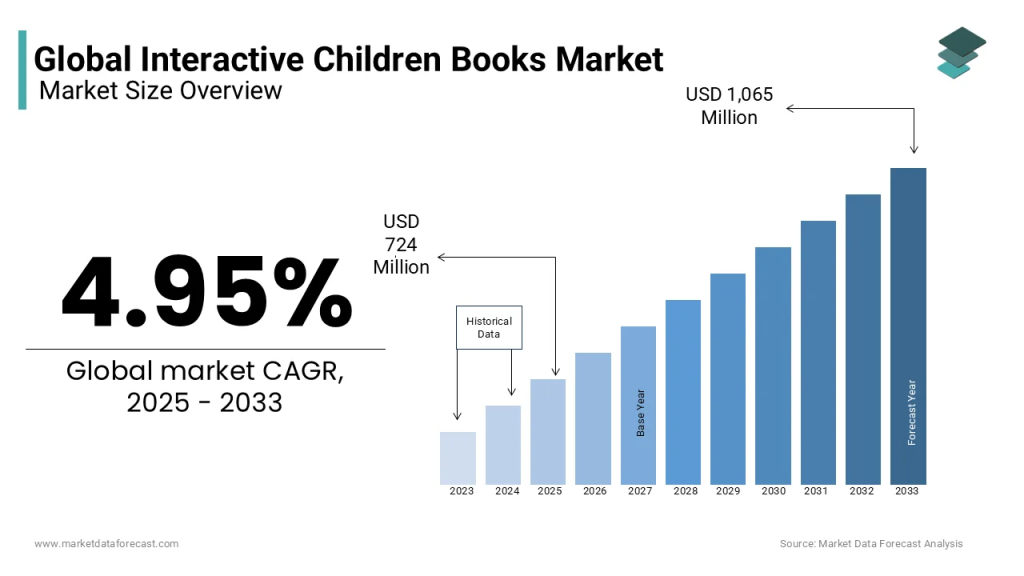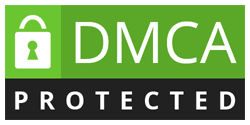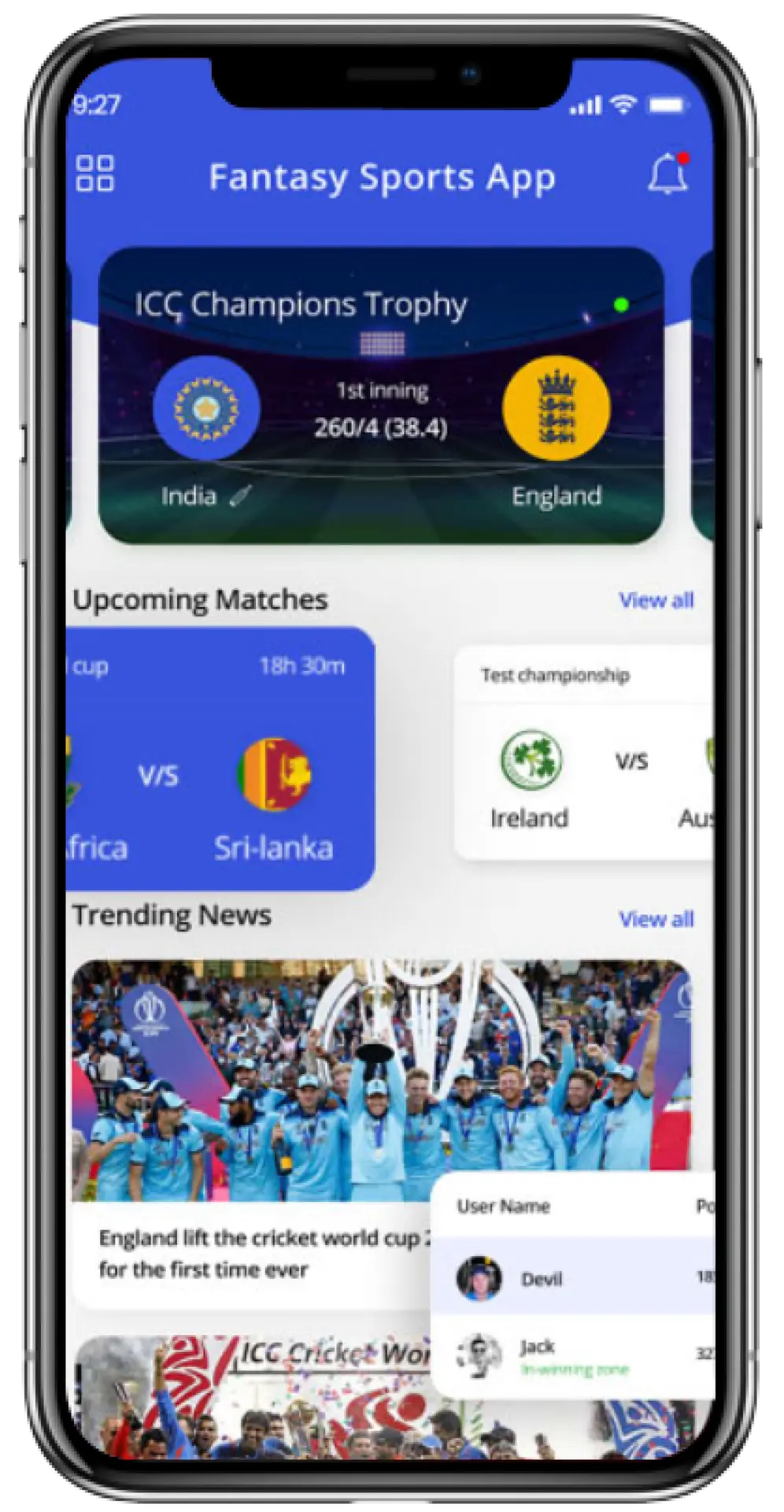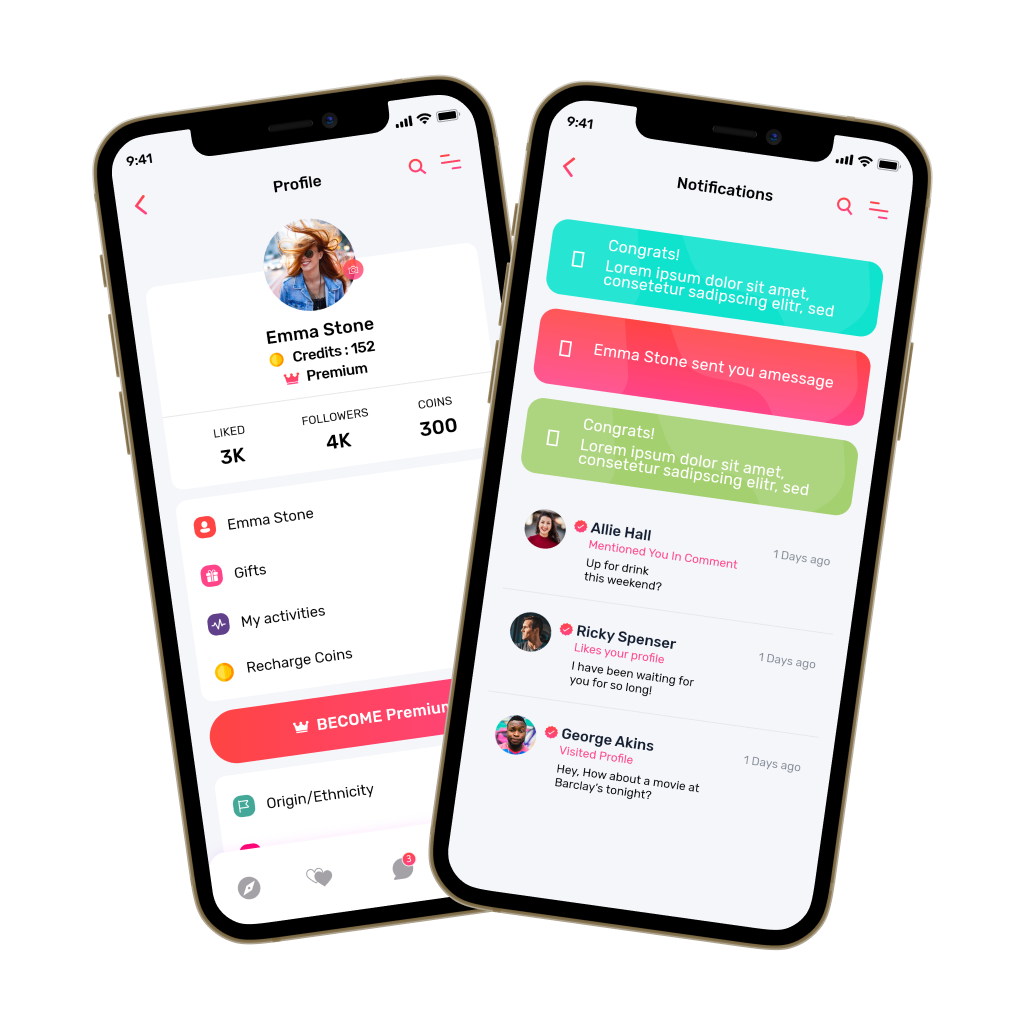A child’s love for stories often begins with a colorful page, a friendly character, or a quiet moment with a parent. Today, that spark often comes from digital platforms, and creating a reading app like Epic allows brands to inspire young readers at scale. While children seek engaging stories, parents and educators look for safety, structure, and content that truly support learning and imagination.
Modern reading apps combine personalized libraries, age-based recommendations, audio-narrated books, progress tracking, and kid-safe design. Supported by adaptive learning, secure content delivery, intuitive navigation, and child safety standards, these apps transform story browsing into a safe, guided, and enriching reading experience for children.
In this blog, we’ll walk you through what it takes to build a strong reading platform, from core features and design choices behind Epic-style apps. With IdeaUsher’s guidance, you’ll gain a clear path to creating an experience kids love and parents trust.

What is a Reading App, Epic?
Epic is a digital reading application designed primarily for children, offering a large library of age-appropriate ebooks, audiobooks, and educational videos. It provides a kid-friendly interface, personalized reading recommendations, and tools that support reading development, such as read-aloud narration and progress tracking. Epic is commonly used both at home and in schools to encourage literacy and independent reading.
This is a comprehensive reading platform for children to find books, build skills, and explore educational content safely. It follows privacy standards like COPPA and FERPA, offering controls, secure accounts, and classroom options to ensure safety for families and educators.
- Designed for young users, with a kid-safe interface that avoids open web browsing and limits exposure to inappropriate content.
- Follows widely recognized privacy standards, including practices aligned with COPPA (Children’s Online Privacy Protection Act) requirements for handling children’s information.
- Supports FERPA-friendly use in schools, offering tools that help educators manage student accounts securely and responsibly.
- Minimizes personal data collection, focusing primarily on reading activity and educational progress rather than unnecessary personal details.
- Provides secure account controls, allowing parents and teachers to manage access, profiles, and reading permissions.
- Ad-free reading environment, reducing commercial distractions and ensuring children interact only with educational content.
- Clear parental oversight, enabling adults to track reading habits, monitor activity, and guide content choices.
- Regular updates and safeguards help maintain platform security and protect against unauthorized access.
Business Model
Epic’s business model centers around being both a consumer-focused reading platform for families and an educational tool for schools, enabling broad adoption across different user groups.
- Subscription service for families: Epic offers a paid “Family / Parent” subscription that gives unlimited access to its full library.
- Freemium model for educators: Its Epic School product is free for teachers and students to use during school hours, driving classroom adoption.
- Premium institutional tier: Through Epic School Plus, schools or districts pay for 24/7 access to the full library and extra administrative features.
- Content licensing partnerships: Epic licenses content from many publishers to build its large catalog of > 40,000 books, videos, and audiobooks.
- Strategic backing / acquisition: Byju’s acquired Epic for $500 million, providing financial support and integration with a larger ed-tech ecosystem.
Revenue Model
Epic makes money primarily through subscription fees, but also benefits from its school partnerships and content licensing strategies.
- Family Subscription Revenue
- Monthly plan: US$ 13.99 / month for the full library.
- Annual plan: US$ 84.99 / year, which works out to about US$ 7.08/month.
- These plans grant access to 40,000+ ebooks, audiobooks, and videos.
- School / Institutional Revenue
- Value from Content Licensing: Epic licenses content from publishers, creating a rich catalog. Its subscription model helps recoup licensing costs.
- Promotional & Teacher-Referral Discounts: Special teacher-referred pricing allows teachers to invite families who may receive discounts, such as $5.99/month via educator offers.
Benefits of a Kids’ Reading App Like Epic
Building a kids’ reading platform provides value beyond entertainment, supporting children’s growth, empowering parents, and opening opportunities for ed-tech businesses. Below are key benefits in two categories.

A. Benefits for Kids & Parents
A kids’ reading app like Epic creates an engaging and safe learning environment that nurtures reading habits from an early age. While children enjoy interactive storytelling, parents gain meaningful tools to track progress and ensure a safe digital experience.
- Encourages consistent reading habits through interactive and engaging content
- Offers a wide library of age-appropriate books, audiobooks, and learning videos
- Provides personalized reading recommendations based on skill level and interests
- Boosts vocabulary, comprehension, and cognitive development
- Enables safe usage with COPPA-compliant data practices and parental controls
- Allows parents to track reading time, progress, and learning milestones
- Builds a positive routine by combining fun elements with educational outcomes
B. Benefits for Businesses & EdTech Entrepreneurs
For entrepreneurs, developing a reading app like Epic opens doors to a high-growth digital learning market. With scalable monetization models and strong demand from schools and parents, it offers long-term business value and brand credibility.
- Taps into a rapidly expanding global ed-tech market
- Supports multiple revenue streams such as subscriptions, licensing, and in-app upgrades
- Achieves high retention rates due to personalized and kid-friendly content
- Builds a strong, trust-based brand through compliance with data privacy laws (COPPA, FERPA)
- Offers scalability with the ability to add new content, features, and integrations
- Attracts partnerships with schools, publishers, and educational institutions
- Enhances business sustainability through recurring monthly and yearly subscriptions
How a 56% Rise in Ebook Adoption Fuels Digital Reading App Growth?
The global interactive children’s books market was valued at USD 690 million in 2024 and is expected to hit USD 1,065 million by 2033, growing at a steady 4.95 percent CAGR. This strong growth reflects how rapidly families, schools, and publishers are embracing digital-first reading experiences for kids.

Studies show that 56 percent of educators now integrate ebooks into their literacy programs, highlighting how digital reading tools are becoming essential across classrooms and learning environments.
A. Growing Demand for Digital Reading Platforms
The surge in ebook adoption is directly influencing how children discover and engage with stories. A growing number of kids now switch between physical and digital books, based on convenience and interest.
Key signals of rising demand:
- 24 percent increase in children’s reading activity in 2023–24, fueled by digital and social-media-driven trends.
- Nearly 50 percent of young readers in the UK read fiction digitally or on-screen.
- Ebook reading among U.S. kids rose from 25 percent to 46 percent over the past decade.
These indicators show that digital reading habits are no longer niche. They are becoming mainstream.
B. EdTech’s Influence on Children’s Reading Habits
Digital literacy tools are shaping how kids read, learn, and interact with content. Interactive formats, audio-enhanced reading, and personalization are now driving higher engagement.
Positive shifts supported by stats:
- 39.4 percent of kids now enjoy listening to audio stories, strengthening comprehension and vocabulary.
- 46 percent listen to audio content weekly, proving a strong shift toward multi-format reading.
- Personalized EdTech experiences can boost content consumption by 60 percent and app usage by 14 percent.
This shows that kids respond positively to interactive formats — making reading apps a highly effective medium for learning.

C. A Strong Market Opportunity for New Reading Apps
The combination of market growth, school adoption, and rising digital reading habits has opened a massive opportunity for entrepreneurs exploring reading app development.
Why the timing is ideal:
- North America alone holds a USD 1.18 billion share of the children’s literacy app market.
- Schools are increasingly adopting digital libraries, with 76 percent of teachers saying ebooks help build reading-for-pleasure habits.
- Parents are actively seeking safe, structured, on-demand reading platforms for kids.
With growing investment in EdTech and a documented rise in children’s digital reading behavior, launching a reading app like Epic has never been more strategically promising.
The rise in ebook use and market growth, alongside changing digital habits among children, indicate a future of more interactive, accessible, and tech-driven reading. This presents a promising opportunity for entrepreneurs. As parents, educators, and young readers embrace digital literacy tools, developing a reading app like Epic is timely. The expanding market offers early movers a chance to lead.
Key Features to Integrate in a Reading App Like Epic
A Successful reading app like Epic development needs features that boost engagement, learning, and accessibility for young readers. These key features form a strong MVP, meeting families’, educators’, and schools’ expectations.

1. Extensive Digital Library for Kids
A good reading app needs a rich digital library of age-appropriate ebooks, audiobooks, and stories across genres like fiction, non-fiction, STEM, and picture books. A curated library fosters trust and creates an engaging, diverse learning environment.
2. Personalized Reading Experience
Personalization is vital in a modern children’s reading platform. Tailored recommendations, adjustable levels, and custom profiles ensure kids engage with content suited to their pace. This improves engagement and builds confidence as they progress.
3. Read-Aloud & Audio Narration Tools
Read-aloud features and high-quality audio help early readers and struggling learners follow along. Highlight-as-you-read tools, synchronized text, and expressive voiceovers make reading more interactive and accessible. These features support literacy and improve comprehension, especially for younger users.
4. Interactive Learning & Engagement Elements
Interactive features like quizzes, vocabulary pop-ups, achievements, and reading challenges boost student engagement. These gamified tools make reading enjoyable and encourage regular use. Incorporating interactive elements helps children understand material better and stay motivated.
5. User-Friendly & Kid-Safe Interface
A clean, intuitive, kid-friendly interface is vital for a reading app for children. Simple navigation, colorful visuals, and safe browsing help kids use the platform independently and avoid inappropriate content. User-focused design enhances usability and builds trust with parents and teachers.
6. Offline Reading & Multi-Device Support
Allowing children to download books offline ensures uninterrupted learning. Multi-device support on tablets, phones, and desktops makes the platform more accessible, increasing flexibility and user retention across environments.
7. Teacher & Parent Dashboards
A dashboard for parents and educators enhances a reading app by offering insights, progress tracking, comprehension analytics, and class management. It allows assigning books, monitoring reading time, and assessing skills to guide a child’s learning.
8. Safe Data Practices & Compliance Standards
For a children’s reading platform, maintaining strong data privacy and protection is essential. Implementing practices aligned with COPPA, FERPA, and other child-safety standards helps ensure secure handling of user information. Transparent policies and reliable security features build trust and make the app suitable for both home and school environments.
9. Seamless Content Discovery
Effective search and filtering tools help children quickly find books by category, reading level, interest, or author. A smooth discovery process keeps users engaged and encourages exploring more titles. Smart filters and intuitive browsing enhance the overall experience.
10. Gamification & Achievement Rewards
Incorporating badges, streaks, rewards, and trophies promotes regular reading. Gamification makes the digital library fun and motivates children to return, boosting retention and engagement.

How to Develop a Reading App Like Epic?
A Reading app like Epic development goes beyond a digital library; it creates an immersive, adaptive learning ecosystem for young readers. Our development process combines intuitive design, adaptive features, and safety to realize your vision.

1. Consultation
Our development journey begins with a consultation to understand your product vision, goals, and target audience. We clarify the app’s purpose, features, age groups, content, and user experience, which helps us create a development roadmap and establish a strategic foundation for your reading app.
2. Market Research
Once we understand your vision, we conduct market research and competitor analysis, including platforms like Epic, to identify standards, user needs, and market gaps. This shapes your competitive edge, sharpens your value proposition, and helps your app stand out in ed-tech.
3. App Architecture
With insights, we structure the app’s flow about how users browse, discover, and interact with content. Developers and content strategists define categories, levels, genres, and discovery paths. Whether offering ebooks, audiobooks, or stories, we help plan a scalable content framework for easy management and expansion.
4. Kid-Friendly UI/UX Design
Designing for kids requires simplicity, clarity, and visual appeal. Our UI/UX team builds intuitive, kid-friendly interfaces with easy navigation and safe browsing. We also create dashboards for parents and educators, ensuring every screen is inviting, secure, and useful for each user group.
5. Personalization & User Profiling Setup
To make your reading app more interactive and meaningful, we use intelligent personalization tools like customized profiles, adaptive reading suggestions, and recommendation algorithms, all tailored to each child’s interests and progress. These features boost engagement and support long-term learning for young readers.
6. Content Management System Development
A strong reading platform requires a flexible digital library system. We create a robust CMS for easy book uploads, categorization, tagging reading levels, adding multimedia, and managing licenses. This keeps your platform fresh, scalable, and capable of expanding without technical issues.
7. Interactive Learning & Engagement Features
To boost user retention, our developers add interactive features like quizzes, streaks, badges, vocabulary boosts, and rewards. These gamification tools make learning fun and support literacy. Building interactive elements keeps your app engaging and educational.
8. Security & Parental Controls
Safety is a top priority when developing children’s apps. Developers implement secure account creation, parent controls, restricted access, and data privacy. These systems meet child-safety standards, giving parents confidence in a safe, age-appropriate reading environment.
9. Offline & Cross-Platform Compatibility
To ensure uninterrupted access, we include offline reading features for downloading books and offline enjoyment. The app works smoothly across tablets, smartphones, and desktops, enabling families and schools to use the platform as they prefer.
10. Testing & Launch
Before launch, we run thorough testing to ensure every feature works smoothly across devices. Functional checks, UI/UX reviews, performance tests, and real-user sessions help confirm stability and ease of use. Once ready, we manage the entire launch process for a smooth, polished deployment.
Cost to Build a Kids’ Reading App like Epic
A children’s platform requires a structured reading app like Epic development approach that covers planning, design, engineering, security, and launch. The budget breakdown clarifies how your investment supports each development phase and the final product.
| Development Phase | Description | Estimated Cost |
| Consultation | Initial discussions to understand your vision, outline project requirements, and define the development roadmap. | $3,000 – $6,000 |
| Market Research | Competitive analysis, audience insights, and feature benchmarking to shape a strong product strategy. | $5,000 – $10,000 |
| App Architecture | Planning the app’s flow, feature structure, database logic, and scalability blueprint. | $12,000 – $17,000 |
| Kid-Friendly UI/UX Design | Designing intuitive, visually appealing, child-safe interfaces for young readers, parents, and educators. | $14,000 – $25,000 |
| User Profiling Setup | Implementing adaptive reading features, recommendation flows, and customized user profiles. | $10,000 – $14,000 |
| CMS Development | Building a scalable CMS for uploading, organizing, tagging, and updating digital reading content. | $15,000 – $28,000 |
| Engagement Features | Developing quizzes, progress tracking, gamification tools, and interactive story elements. | $13,000 – $27,000 |
| Security & Parental Controls | Implementing data protection measures, parental dashboards, activity controls, and child-safe compliance systems. | $`0,000 – $16,000 |
| Offline Compatibility | Enabling offline reading, multi-device functionality, and seamless app performance across platforms. | $7,000 – $14,000 |
| Testing & Launch | Comprehensive QA, real-user testing, performance checks, and deployment to app stores. | $10,000 – $13,000 |
Total Estimated Cost: $60,000 – $130,000
Note: Development costs depend on content volume, feature complexity, UI needs, privacy compliance, advanced features, third-party integrations, scalability, and post-launch updates.
Consult with IdeaUsher for a tailored cost estimate, roadmap, and expert support to design, develop, and launch a scalable, engaging, and secure reading app for young readers.
Privacy & COPPA Compliance for Kids’ Reading Apps
Creating a children’s reading app requires more than good design and content; it’s essential to follow child data protection standards. COPPA compliance and privacy frameworks protect young users and build trust with parents, educators, and schools.
A. Understanding COPPA Requirements
COPPA regulates how digital products collect and handle data from children under 13. For an app like Epic, compliance involves getting parental consent, limiting data collection, and being transparent about privacy. Our development ensures your app meets COPPA guidelines from the start.
B. Additional Data Privacy Considerations for Kids’ Apps
Beyond COPPA, children’s platforms must also follow FERPA for schools, GDPR-K internationally, and best practices for secure data. We design your app with minimal data collection, strong encryption, safe authentication, and clear access controls to ensure security. These measures protect user info, reduce legal risks, and support scalability.
C. Why Privacy Compliance Builds Trust
Privacy protection is key for parents, teachers, and schools when choosing digital learning platforms. A reading app that emphasizes data safety and transparency builds confidence and is seen as trustworthy.
- Reassures Parents About Safety: Parents feel more comfortable allowing children to use the app when data handling is transparent and minimal.
- Strengthens School Partnerships: Schools and districts prefer apps that align with COPPA, FERPA, and similar privacy expectations
- Positions the App as Responsible & Ethical: Compliance shows that your brand prioritizes child safety over aggressive data collection.
- Reduces Legal and Security Risks; Adhering to privacy standards minimizes the risk of violations, penalties, or security breaches.
- Boosts User Adoption & Retention: When users trust your platform, they are more likely to recommend it and remain long-term customers.
- Supports Long-Term Market Credibility: Privacy-focused apps gain stronger reputations and stand out in the competitive ed-tech ecosystem.

SWOT Analysis of a Reading App Like Epic
A SWOT analysis helps evaluate the strategic position of a reading app like Epic by examining its internal strengths and weaknesses along with external opportunities and threats. It provides clarity for entrepreneurs planning to build or improve a similar platform.

A. Strengths
These are the key advantages that make a reading app like Epic competitive and appealing in the ed-tech market.
- Extensive content library featuring thousands of ebooks, audiobooks, and educational videos, which increases the platform’s appeal for both home and school use.
- Kid-friendly design and navigation, allowing children to explore and read independently in a safe environment.
- Strong presence in schools, supported by free educator access that encourages widespread classroom adoption and long-term user familiarity.
- Multiple user tiers (free school access + paid family plans + paid school upgrades), providing broad reach and conversion opportunities.
- Partnerships with major publishers, enabling access to high-quality, trusted content and strengthening brand credibility.
- Personalized reading recommendations and learning tools that encourage engagement, progress tracking, and consistent reading habits.
B. Weaknesses
These factors represent internal limitations or challenges that may hinder growth or performance.
- High content licensing costs, which can impact profitability for a subscription-based platform with a large library.
- Dependence on publisher agreements, making the app vulnerable to changes in licensing terms or content availability.
- Competition from free or low-cost alternatives, which can reduce conversion rates and increase subscriber churn.
- Limited product differentiation, as many digital reading platforms offer similar features such as ebooks, audiobooks, and read-aloud functionality.
- Institutional sales challenges, where selling to schools or districts often involves long decision cycles and budget approvals.
C. Opportunities
These are external possibilities your product can tap into for expansion, innovation, and market advantage.
- Expansion into localized and multilingual content, enabling growth in global markets and better serving diverse reading communities.
- Advanced AI-driven reading features, such as adaptive reading levels, pronunciation assessment, and comprehension insights.
- Enhanced gamification elements, including rewards, streaks, and interactive challenges to boost daily engagement.
- Growth in audio and interactive storytelling, tapping into rising demand for podcasts and immersive learning formats for children.
- Creator and educator content tools, allowing authors or teachers to upload and monetize their own stories or learning materials.
- Partnerships with literacy organizations, NGOs, or educational institutions to broaden reach and impact.
D. Threats
These are external risks or pressures that could impact the platform’s stability, growth, or competitiveness.
- Rising licensing and content acquisition fees, which can reduce margins for a library-driven platform.
- Increasing competition from other reading apps, ed-tech platforms, and free digital libraries offered by schools or public institutions.
- Privacy and compliance requirements for children’s apps, which continue to evolve and may require costly updates.
- Market saturation in the digital learning and reading-app space, making it harder to stand out.
- Variable school funding and policies, which can affect uptake of paid institutional plans.
- Device accessibility challenges, as families or schools may lack consistent internet or compatible devices.
Challenges & Solutions During Kids’ Reading App Development
Developing a kids reading platform requires solving practical, technical and compliance based issues with clarity and precision. Below are the most critical challenges along with how we solve them during reading app like Epic development.
1. Age Appropriate & Quality Content
Challenge: Building a balanced and diverse library that fits different reading levels and age groups is difficult because it requires constant curation, reliable categorization and alignment with age specific learning needs.
Solution: We build a flexible CMS enabling entrepreneurs to manage books, upload content, and assign tags for age, difficulty, and themes. It supports automated categorization, reading level mapping, and scalable content, keeping the library easy to maintain as it expands.
2. Kid-Friendly UI/UX Design
Challenge: Designing an interface that is visually appealing yet simple for children is challenging because kids require intuitive navigation, clear readability and minimal distractions to stay engaged.
Solution: We design with large touch friendly elements, guided interactions and high contrast visuals. Our team conducts usability testing sessions with real users to validate behavior patterns and refine the UI until it fully supports natural exploration and independent reading.
3. Personalization & Adaptive Learning
Challenge: Creating accurate personalization for children is complex because their reading speed, comprehension and preferences change frequently, making consistent recommendation accuracy difficult to maintain.
Solution: We use behavior-based analytics and lightweight AI models that learn from reading duration, completion patterns, and difficulty trends, enabling us to build adaptive reading paths that automatically improve over time during app development like Epic.
4. Safety, Privacy & Compliance Requirements
Challenge: Kids apps must comply with COPPA, FERPA, and similar laws, making data handling, parental consent, and age verification more sensitive and legally complex.
Solution: We implement secure onboarding, parental dashboards, and transparent consent controls. Our team designs data processes that minimize collection while maintaining personalization. Regular privacy checks ensure compliance and reinforce trust.
Conclusion
Creating a reading platform that captivates young readers requires thoughtful design, engaging content, and seamless usability. Reading app like Epic development emphasizes personalized learning paths, interactive books, and progress tracking to encourage consistent reading habits. Incorporating features such as quizzes, rewards, and parental dashboards ensures both engagement and oversight. Prioritizing scalability, content variety, and performance allows the app to grow with its users, delivering a reliable, educational, and enjoyable reading experience that fosters a lifelong love for learning among children.
Why Choose IdeaUsher for Your Reading App Development?
IdeaUsher specializes in building scalable digital learning platforms that deliver engaging reading experiences for children. Our team designs apps that combine interactive content, secure architecture, and intuitive UI to help young readers explore stories with confidence. Whether you need custom libraries, adaptive learning paths, or advanced analytics for parents and educators, we create solutions tailored to your goals.
Why Work with Us?
- Expertise in EdTech Platforms: We build reading apps that support large content ecosystems and dynamic personalization features.
- Custom Learning Features: From progress tracking to gamified modules, we design tools that improve reading outcomes.
- Proven Delivery: Our portfolio includes learning platforms that serve thousands of young users.
- Future Ready Solutions: We develop apps that scale smoothly as your content, audience, and use cases expand.
Explore our past projects to see how we have supported clients in launching successful digital learning products.
Reach out for a consultation and let us help you build a reading platform that delivers real learning value.
Work with Ex-MAANG developers to build next-gen apps schedule your consultation now
FAQs
Key features include a vast library of interactive books, personalized reading recommendations, progress tracking, quizzes, offline access, and parental dashboards. These elements engage children and help monitor learning while ensuring a safe and educational experience.
The cost depends on features, platform choice, and design complexity. A basic version may start around $60,000, while a fully-featured, scalable app with gamification and advanced analytics can exceed $130,000.
Security includes strict data privacy, secure logins, controlled access for children, and compliance with regulations like COPPA. Ensuring minimal data collection and transparent policies builds trust with parents.
Gamification boosts motivation through rewards, badges, levels, and progress milestones. These elements turn reading into an engaging habit, helping children stay consistent while giving parents visible indicators of improvement.






















